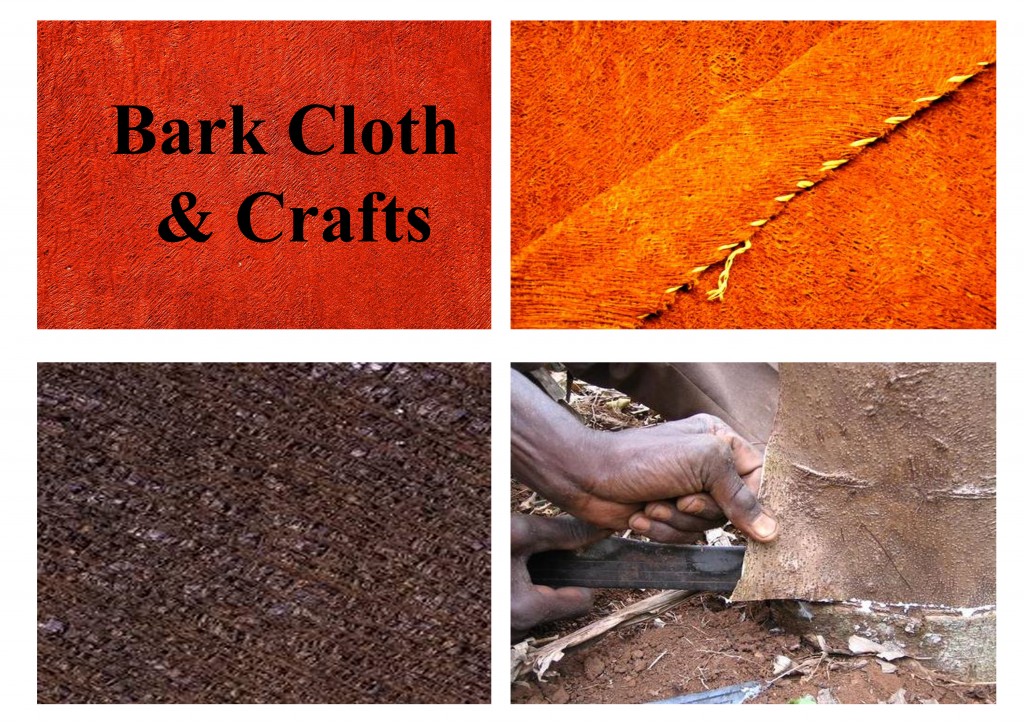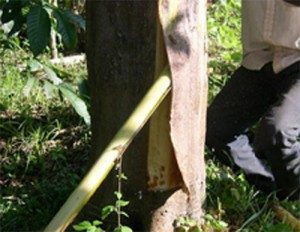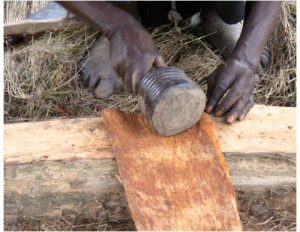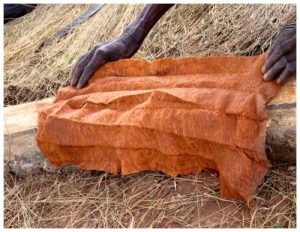A NEW ADVENTURE
Mutuba Tree.
Today women of roses are involved in a new initiative: the production of bags, and clutches using bark cloth (literally “backcloth”).
The bark cloth is a traditional fabric produced in the western districts of Uganda where the ancient central Buganda kingdom, obtained through a slow and delicate process of the cortex.
It is a fabric once widespread, then supplanted by the introduction of cotton; but she has maintained a strong cultural value, it is still used today during the traditional functions of the realm.
The fabric is made from fibers of some plants of the family Moraceae, including paper mulberry, the breadfruit (breadfruit) and the ficus. Uganda is in particular used the bark of Ficus natalensis, which locally is called Mutuba. The bark of the trees “mature” is collected once every five years,Allow the plant to regenerate. For that is covered with large banana leaves.Production of this material has also been recognized by UNESCO as a masterpiece of Production of this material has also been recognized by UNESCO as a masterpiece of intangible heritage of Africa and its oral tradition in 2005, as a treasure to know because it is not forgotten and abandoned definitively.
1st Step The bark, engraved over the entire height of the trunk, along its circumference, is removed. Once eliminated the outer layer of bark, it takes a long sheet of inner bark that is beaten gently for hours with different types of hammers. By beating the fibers soften and elasticizing, and the sheet surface quadruples.
2rd Step From a bark of 75×150 centimeters, you get a great fabric up to 400×180. A tree during its existence (40 years old) can produce up to 400 square meters of cloth
3rd Step After the beating, the fabric is laid out to dry completely. At the end of the process you get a soft, colored clay, which if stored properly can withstand more than 30 years.
4th Step The raw fabric arrives in the laboratory, where it is colored with natural paints and left to dry in the sun. After the drying step, a thin Layer of wax is coated on the fabric. Following is applied a strengthening bag. At this point the tissue is ready for production: cutting and sewing.






